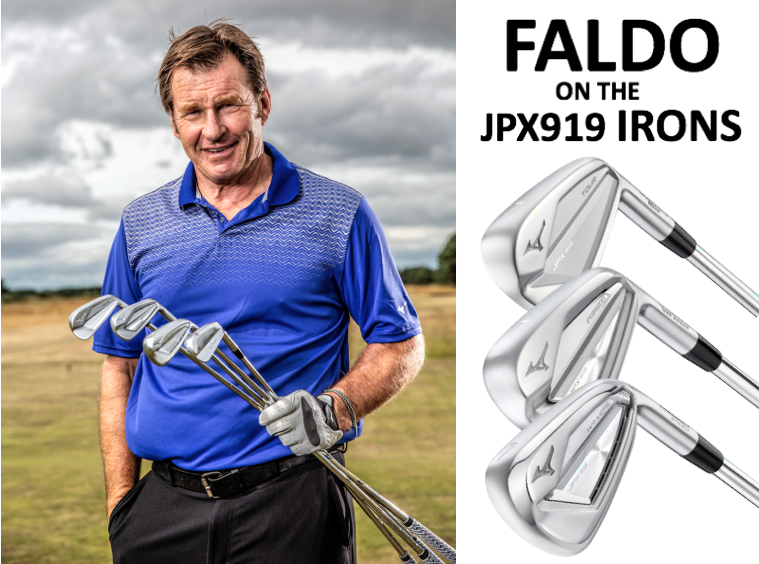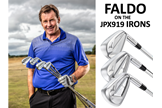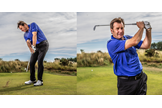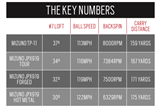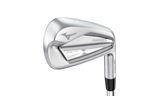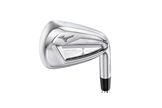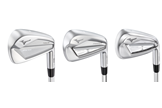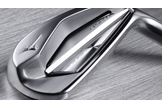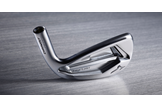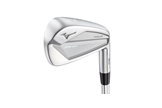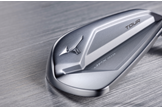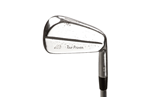TESTED: Blade vs Cavity Back irons with Nick Faldo and new Mizuno JPX919 irons
Last updated:
It’s 22 years since Sir Nick Faldo won his last major. It was 1996 and he tore 11 shots out of Greg Norman in the final round of the Masters at Augusta.
For eight years (from 1988 to 1996) Faldo was the dominant force in golf, winning six of the biggest tournaments in the game – and he did it all with Mizuno irons in his bag.
Nick doesn’t play much tour golf nowadays; instead he commentates for CBS and the Golf Channel in the USA. In 2009 he became the only living British golfer to be knighted, and is actively involved with his Faldo Series, which identifies and helps tomorrow’s golf champions succeed. He’s also designed 24 golf courses across the globe… so it’s fair to say he’s a busy guy!
So when we asked Mizuno if Faldo would test their brand new JPX919 iron family for us, against a set of his old major-winning blades, we didn’t hold out much hope. But after a couple of weeks of negotiation, and some invaluable help from Nick’s son Matthew during Open Championship week, we finally got the green light. This is what happens when a six-time major champion gets his hands on Mizuno’s brand new toys for the very first time.
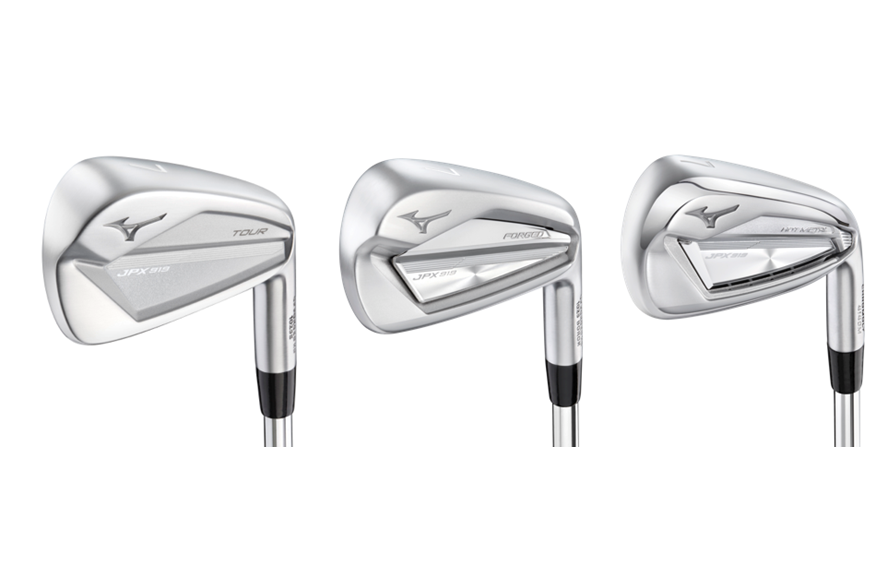
REVIEW: Our verdict on the Mizuno JPX919 Tour iron
REVIEW: Our verdict on the Mizuno JPX919 Forged iron
REVIEW: Our verdict on the Mizuno JPX919 Hot Metal iron
It’s 10.30am on the Tuesday after the Open Championship and we’re standing on a deserted range at Panmure Golf Club, just down the road from Carnoustie. The sun’s burning as Britain swelters in its hottest ever temperatures and Nick Faldo is in Scotland to play at the Seniors British Open at St Andrews. We’ve got an hour with Britain’s greatest ever golfer, and the idea is to put Mizuno’s three new JPX919 irons through their paces to show you how they compare in the hands of a legend.
Despite the heat Faldo rocks up looking particularly spritely. Shadowing him is Bill Price – Mizuno’s Head of Global Custom Fitting – with a Trackman launch monitor, and after some brief introductions and handshakes Faldo starts warming up his a wedge.
Faldo was completely tuned into his equipment (some would say picky) in his pomp, and it’s clear he knows plenty about iron design, so it takes him no time at all to spot the look of a faithful old friend as we put a Mizuno TP-11 iron (circa 1990) in his hands. The idea is to give us a traditional blade benchmark for our test, and see how the JPX919s compare.
He loves the “high heel” look, feeling it cups the ball at impact and gives the instant impression that shots won’t go left like low heel models. Bearing in mind Faldo only practices for 5% of the time he used to, shot after shot is sweetly struck towards the corner of the range, and it doesn’t take him long to settle into his stride and start telling us stories from the past.
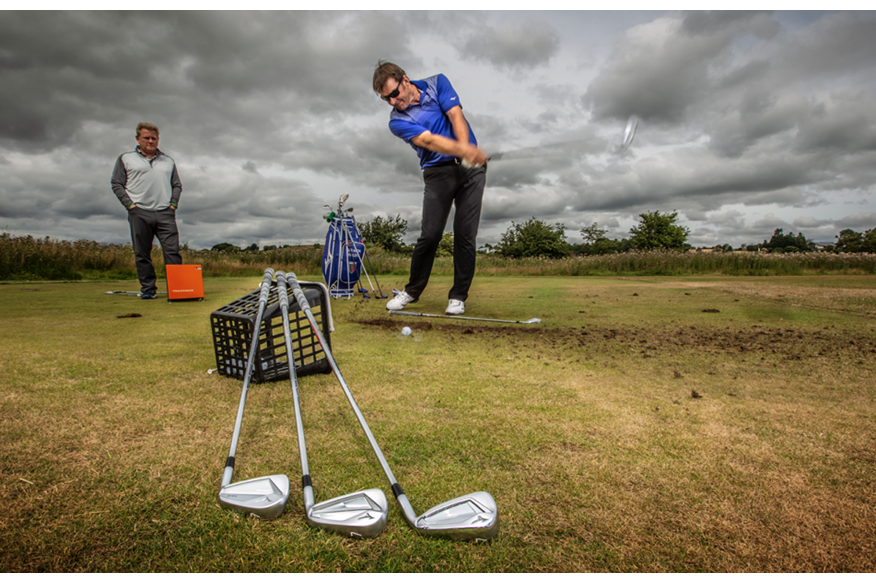
He recalls how Mizuno assigned him his own grinder in Japan, back in 1986. The guy’s name was Turbo, and he was picked because he was the tallest guy in the factory – yet he still had to stand on a wooden box to look down from 6’3” (Faldo’s height) to see how each iron looked at address from Faldo’s eye line.
“I spent time at Mizuno’s biggest shop in Tokyo 1986,” Faldo tells us. “We spent hours looking at boxes full of head shapes. They questioned how I wanted every detail, from offset to blade length, top line thickness and which toe and leading edge shape I wanted. It was a service I just couldn’t get from any other brand at the time. We’re talking pencil lead width differences, but we designed every detail of each iron in the bag from the ground up, and because Turbo was such a skilled craftsman he ground each to look open so I could hit my favourite Faldo fade, and flow the neck into the topline in just the way I liked.”
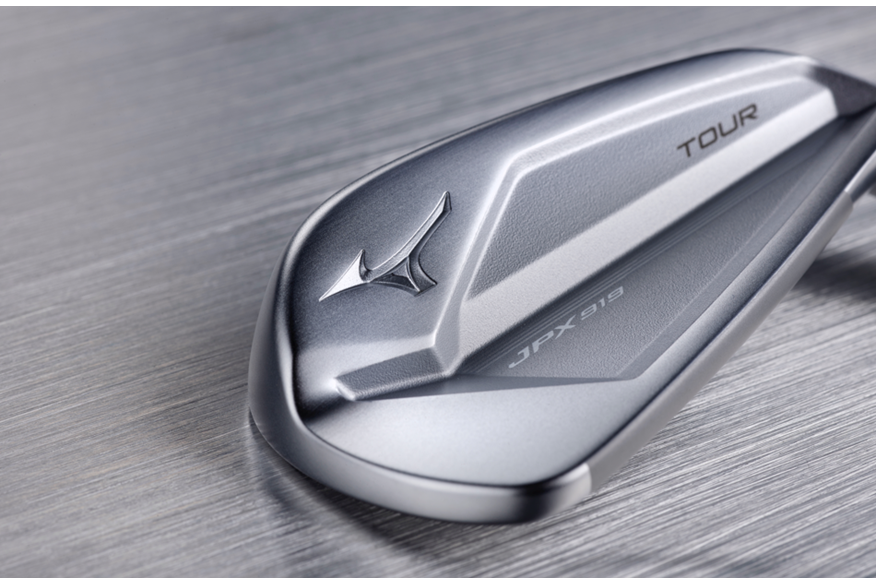
After a dozen or so well struck shots we’ve got our “traditional” blade data, so we slip a new JPX 919 Tour 7-iron into Nick’s giant hands. Faldo was always known for being a great long iron player and we can’t help but be impressed hearing the sound of balls being clipped so beautifully from the hard turf. We didn’t expect Faldo to be so enthusiastic about hitting balls, but there’s no stopping him grinding in the dirt, and demanding data for spin, ball speed, height and carry distance from virtually every shot.
He’s visibly impressed with the extra solidness and stability the new JPX919 Tour head delivers over the vintage TP-11. He loves the blade-like appearance, too.
READER TEST: Four TG readers give their view on Mizuno’s JPX golf ball
Faldo’s story-telling, like his ball-striking was on-form, too. “Even though we worked really closely on head shapes back then, Mizuno would send me four sets of exactly the same iron at the end of each year,” he reveals. “It acted as my inspiration to get out and prepare for the following year. I’d hand-pick a number one and two set from each of the individual irons, and spend hours getting a feel for them on the practice ground.”
Iron technology (and a 3° stronger loft) has obviously come a long way in 28 years as there’s an instant ball speed gain of 3mph and eight yards of carry switching to the JPX 919 Tour from the TP-11 – all, says Faldo, with absolutely no trade-off in terms of look or performance.
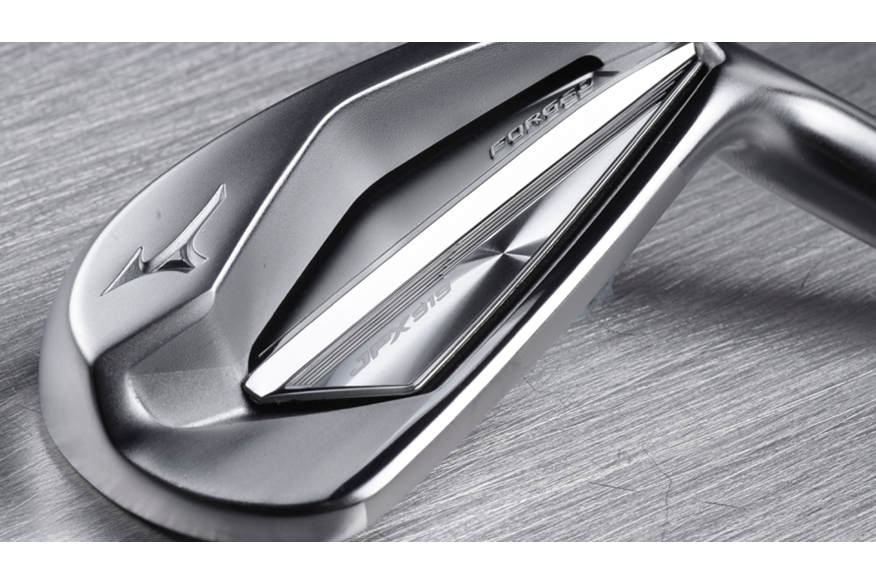
Next up are the JPX919 Forged, which are going to replace his current JPX900s. “New clubs have to look good first,” he says. “I have to put them down and love the look, and after that comes the science and numbers. Blades are hard work, so I need a bit of help and the Forged gives me that”.
It takes just two crisply hit shots for a smile to cover his face as he feels shots jumping off the face faster, and sees an instant increase in ball speed and carry on the launch monitor. The gains are down to the Forged having a faster, thinner face and undercut pocket cavity (as well as a stronger loft), and the data couldn’t show more perfectly how big a role modern technology plays in helping golfers hit shots further, with more forgiveness and consistency than ever before.
TESTED: Can mail order golf balls really compete against a Pro V1?
We’re seeing a 6mph ball speed gain over his old TP-11s and an average carry distance gain of 12 yards – seriously impressive from a one-piece forged head.
Tech’s not the only change either – looks have moved on dramatically, too. “Back in the day we all thought our irons were the best out there, but looking back I wonder what I was thinking!” says Faldo. “I liked very offset wedges as I loved to hit low shots – I prided myself on hitting wedges on a 4-iron flight,” he adds as we wrestle the Forged out of his grasp and replace it with Mizuno’s new game improvement iron, the JPX 919 Hot Metal.
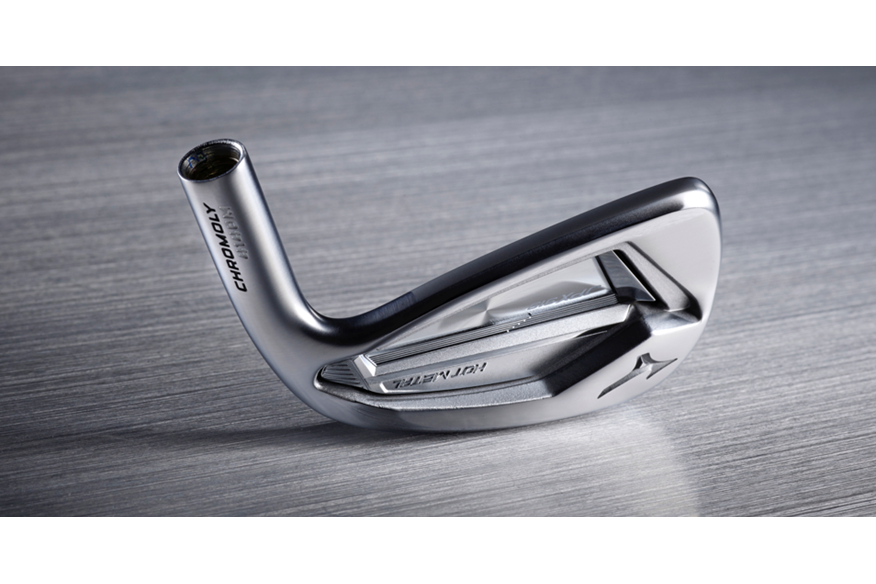
Now the Hot Metal is absolutely not aimed at a player of Nick’s ball striking ability, but at 61 years old it’s incredible to see he’s still got the drive to spend serious time on the range and get genuine excitement and pleasure from putting new equipment through its paces.
He constantly switches back and forth between the Hot Metal and vintage TP-11 blade, just to see how much difference there really is between the pair, and satisfy his naturally inquisitive nature.
REVIEW: Everything you need to know about shaft weight and why it’s now more important than flex.
A busted TP-11 gives an extra 2-3mph of ball speed over his average, but it’s still 20 yards down on a stepped-on Hot Metal 7-iron. As Faldo cuts more turf from the Panmure practice ground he’s clearly enjoying working on his game, and quickly spots the benefit a fast-faced driving iron (the JPX 919 Hot Metal 4-iron has a traditional 3-iron loft) could bring to his own game. “If I’m building a bag I can see a place for Hot Metal long irons,” he tells us, adding: “They’re like training a horse; you need to get the reins on to keep them under control.” The really impressive thing is how the fast-faced Hot Metal flighted shots through a very similar window to the other models. “Shots are flying further without ridiculously low spin,” says the fitter, which would mean shots would want to nestle on a green.
Faldo’s game at his best was based around iron play and we can’t help asking about the best iron shot he ever hit. He doesn’t hesitate in replying: “I was world No.1 in 1992 and I went to The Open at Muirfield playing great. In the final round I had a four-shot lead, but started frittering shots away. Coming down the stretch I told myself I needed to play the best four holes of my life, and I near as damn it did. A 5- and 4-iron on the closing holes and a nailed 3-iron at the last which took the paint off the flag set up my victory… those were the best shots I ever hit.”
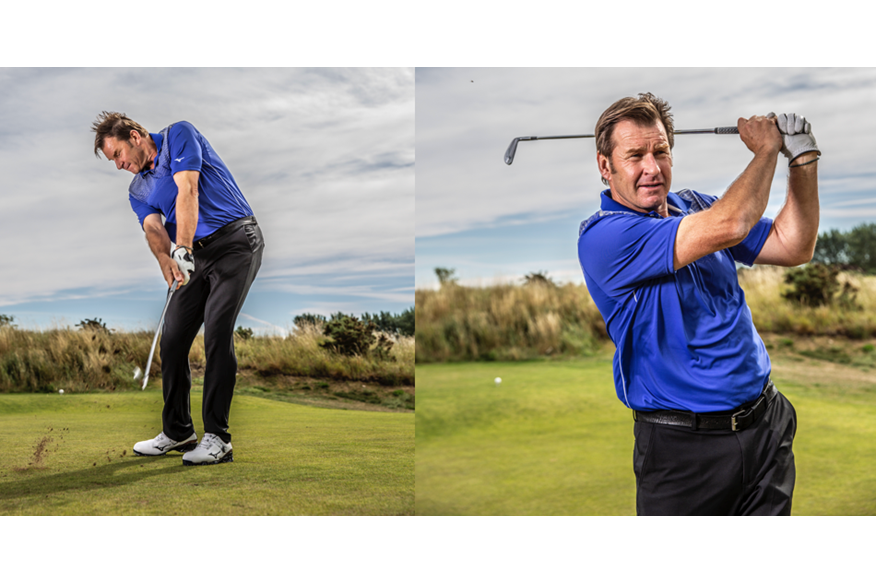
An hour and a half has flown in what feels like minutes, and Nick’s still working on Trackman when Mizuno’s sales reps from across Europe, the Middle East, Asia and Australia arrive for their annual autumn sales conference.
What’s clear is that the guy still loves hitting golf balls and like most golfers is searching for any extra advantage he can get his hands on. Launch monitors, ball and club data and fast-face irons weren’t even a thing when Nick was winning majors. But 28 years on technology is playing an ever bigger role in the game, and it’s satisfying to know a six-time major champion sees just as much benefit from Mizuno’s new irons for his own game as we will for ours.
Nicks specs
We had Mizuno make up the four iron models we tested with Nick’s choice of shaft. He usually plays Project X, but was playing Dynamic Gold S300 at St Andrews to keep shots a little lower in the wind. We ensured every 7-iron loft was matched to its original spec.
Data:
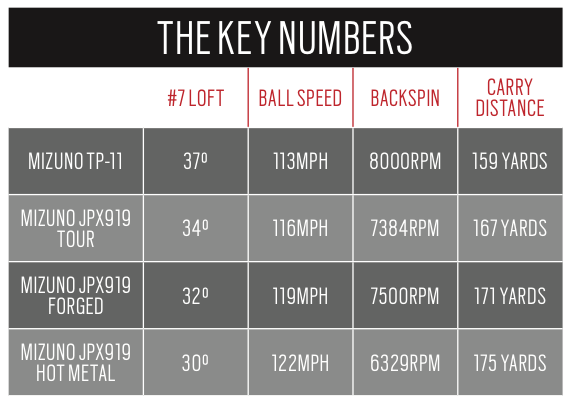
Review: Faldo on… His old faithful TP-11 iron
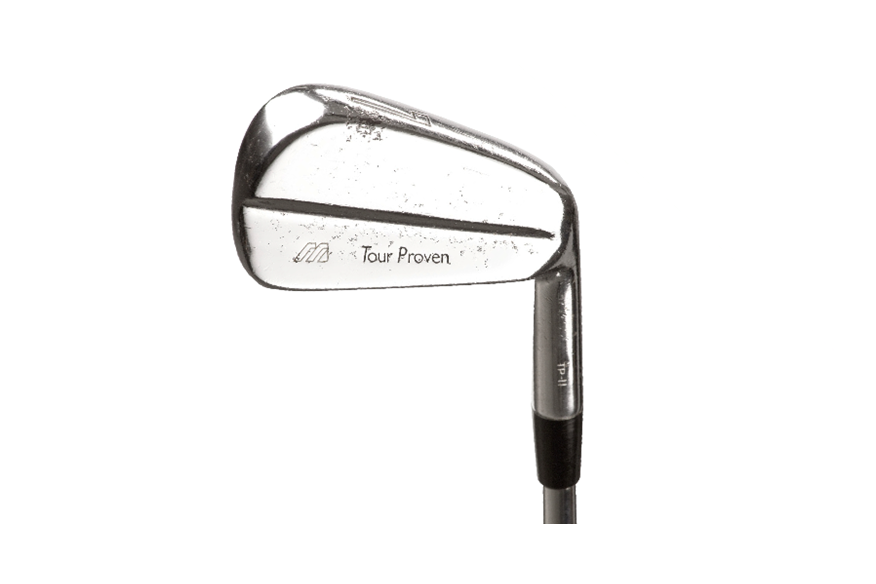
7-iron loft: 37°
“It’s the old look we wanted years ago with a high heel, but today I’d liken it more to a pretty shovel. It looks like there’s an awful lot of metal behind the ball, I call it a trapping look; to me it takes away the fear of hitting shots left. The sole is flat and skinny, and nothing like as sculpted or rounded as the modern JPX919 Tour. This turf interaction is the biggest difference I can feel switching from the old TP-11 to new 919 Tour.”
Review: Faldo on… Mizuno’s JPX919 Tour iron
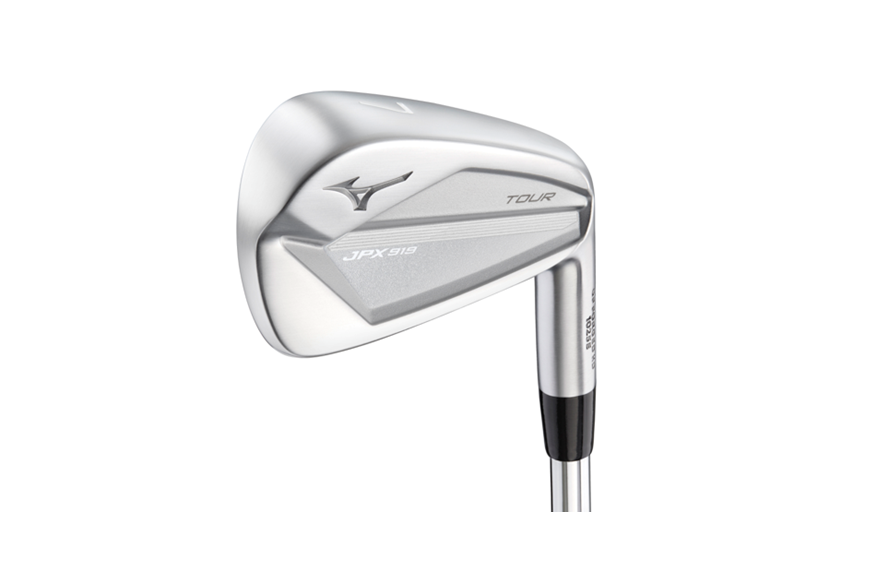
7-iron loft: 34°
“If I can feel feel, I want as much of it as I can get – and that’s where the Tour delivers. Mizuno’s modern perimeter weighting (stability frame tech) improves stability which means off-centre hits feel and perform better. Blades really have moved on (even though the Tour isn’t quite a full muscleback) and I really enjoyed hitting the Tour. It’s very solid – much more solid than the traditional TP-11 blade.”
REVIEW: Our verdict on the Mizuno JPX919 Tour iron
Review: Faldo on… Mizuno’s JPX919 Forged iron
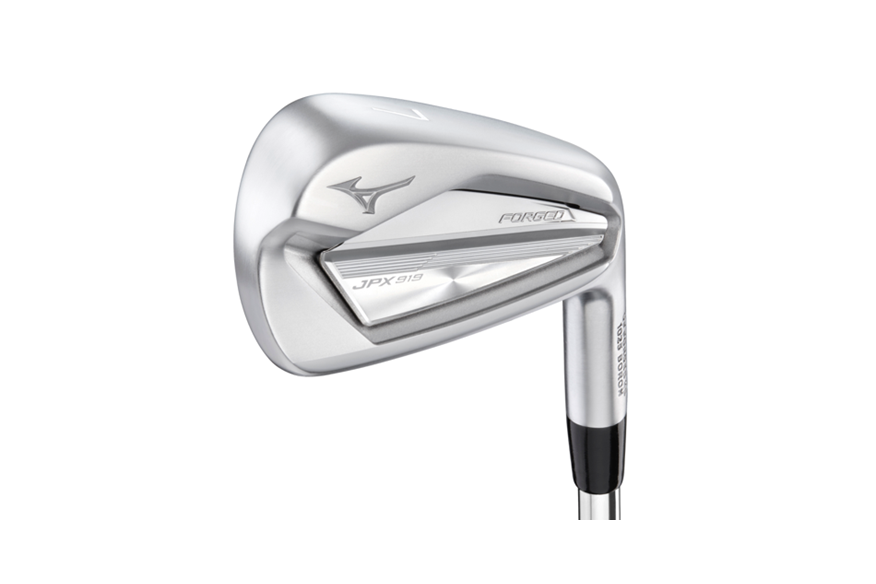
7-iron loft: 32°
“In my prime cavity backs had hardly been invented so there was never a question of me playing them. But today I love the offset, the leading edge and bounce of the Forged. To me the Forged goes higher quicker and stayed in the air for longer, and still gets the height I need to stop shots on a green. It’s a seriously cool iron, with a great shape and a little thicker top edge over my current JPX900 Forged irons. The secret is off-centre hit performance has improved; for me the Forged has more oomph or meat behind it.”
REVIEW: Our verdict on the Mizuno JPX919 Forged iron
Review: Faldo on… Mizuno’s JPX919 Hot Metal
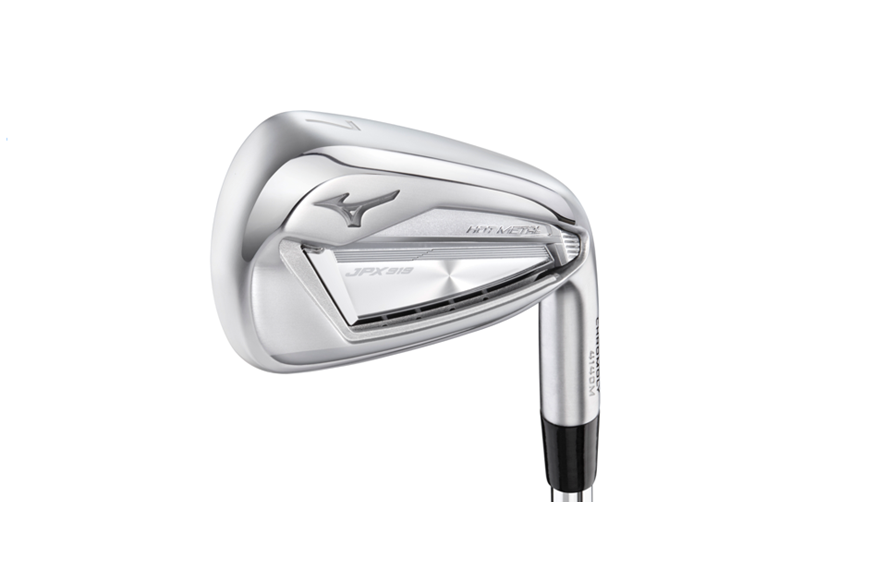
7-iron loft: 30°
“For me the Hot Metal is fun, and perfect for golfers who’ve lost a bit of zip. You have to remember the Hot Metal #7 iron is equivalent to my usual 6-iron (it’s 7° stronger than the TP-11), but that shows the difference between seven irons in 1990 and 2018. Shots fly off the face really fast, the difference between this and the old TP-11 can be likened to the difference between chalk and cheese. Irons just weren’t made like this years ago.
